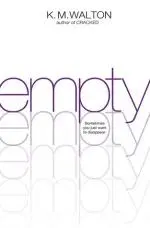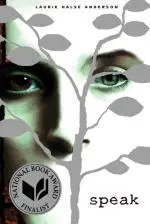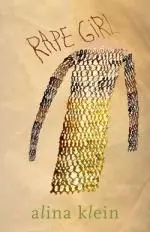Today’s Young Adult literature doesn’t shy away from the tough topics of teen reality, and there are a number of excellent titles that handle sexual assault with the necessary gravitas. The question is whether or not these titles are refuting today’s prevalent rape culture, or are they actually contributing to it? When Young Adult authors depict characters in these situations, are the narratives breaking down walls when it comes to reporting issues and shame, or are they supporting a growing culture that silences victims? I’m looking at four Young Adult novels that focus on sexual assault and breaking down their contribution to the growing discussion.
SPOILERS ahead.
![]() 1. 'Fault Line' by Christa Desir
1. 'Fault Line' by Christa Desir
Christa Desir’s Fault Line is a young adult novel that examines the dramatic effects of victim-blaming after a sexual assault situation. When Ben meets new girl Ani in the parking lot of the 7-Eleven, he’s instantly drawn to her sassy wit and irreverent humor, not to mention the killer pair of legs that has every guy at school looking. Ben couldn’t be happier to find out that Ani likes him just as much and the two embark on a roller-coaster ride of new romance. They spend every waking moment together and quickly form an unbreakable bond. What seems like a romance that cannot be fractured is shattered one night when Ani attends a party without Ben. When Ben gets the call to come see Ani at the county hospital his world falls apart. He has to sift through the nasty rumors and the petty lies to find the truth about what really happened that night. After the night of the party Ani is irrevocably changed. Gone is the sweet girl with the easy laugh and ready smile, replaced by a sullen and overly promiscuous girl who doesn’t seem to want to be helped. Ben will do anything to help heal his girlfriend, but he struggles with the weight of her secret.
In the events leading up to Ani’s rape, she was seen at a party having a good time. According to witnesses, she seemed drunk, dancing on the tables, and was loudly proclaiming her intention to hook up with boys at the party. Her obvious intoxication and apparent revelry left very few people at the party to question what might have happened as Ani was carried up the stairs by a group of young men. Ani’s assault is particularly horrifying in the aftermath that lands her in the county hospital to have a lighter removed from her vagina. Instead of seeing the heinous act for the assault that it was, Ani’s classmates at school spread rumors that she was putting on a show with the lighter and call her vulgar names.
As the partygoers gossip about her after the fact it never enters their minds to wonder if a date rape drug might have been to blame for her overtly sexualized behavior. Instead, they jump right to the conclusion that Ani was asking for the sexual attention. They saw her as drunk and promiscuous instead of possibly drugged and vulnerable. Their failure to consider other alternatives is a clear example of victim-blaming in contribution to rape culture. Their constant and overtly cruel taunting leaves Ani with the notion that she is to blame for what happened. Instead of seeking help from her mother or the rape counselor who attends to her the evening of her assault, Ani falls into progressively more destructive patterns, including dangerously promiscuous behavior.
In writing Fault Line, it was Desir’s hope to open the lines of communication for teens regarding rape and victim-blaming. In an interview with The Stake, Desir discusses the lessons she hopes teens take away from the book.
“I hope I start a discussion about the role people play with survivors. The role they play in victim-blaming, in silencing survivors, in retraumatizing them in a way. I hope to start a discussion about what is the definition of rape, what enthusiastic consent looks like, and how to take care of someone in a situation like Ani is in. I also hope that if boys see girls like this at a party, in school, wherever, they will pause and reframe their perceptions of what is really going on. I want the “messiness” of this book to start a discussion about culpability, about what we can all do to make this look different.”
The novel ends with Ani as a broken character lost in the aftermath of her sexual assault and Ben struggling to find the right ways to help her heal. Despite Desir’s intention to create a novel that condemns victim-blaming, I can’t help but feel that the ambiguous ending of the novel that leaves the victim’s future looking bleak and unredeemable might actually contribute to today’s rape culture environment. In order to refute rape culture and truly denounce victim-blaming, we would need to see Ani’s tormentors come to some sort of justice or understanding about the event, or at least see her begin to heal in some way. Instead, Ani’s attackers get away with the rape and her classmates get away with relentless victim-blaming, leaving Ani’s life torn apart. Although the novel clearly opens the discussion about rape and enthusiastic consent, it fails to make a statement against the way that Ani is ultimately treated in the novel. In the end the victim is lost and victim-blaming is effective in silencing her.
![]() 2. 'Empty' by K.M. Walton
2. 'Empty' by K.M. Walton
Another young adult novel that addresses the detrimental effects of victim-blaming is Empty by K.M. Walton. Seventeen-year-old Adele, known better as Dell, knows pain. Her father is a deadbeat dad who walked out on her pregnant mother and her mother is a devastated shell of the woman she once was who now depends on the comfort of prescription drugs to get by. Dell has dealt with her parent’s divorce and the stress of life by eating. Food brings her comfort and now she’s overweight and unhappy, hiding behind self-deprecating jokes. When Dell is sexually assaulted by her longtime crush Brandon, she knows nobody will believe her. Who would believe the most popular boy at school would sleep with fat, boyish Dell? She can’t even tell her best friend, who has been slowly slipping away to be part of a more popular crowd. Feeling lost and alone in a cruel world, Dell goes to extreme measures to stop the pain.
Although she knows she has been violated, she feels a certain amount of culpability due to the fact that she had consumed alcohol on the night of her assault. Complicating her feelings is the fact that this is a boy who she has liked for a long time. When her classmates begin talking about the night of the party at school the following week, Dell is shocked to hear that Brandon is claiming that Dell actually raped him. Told via text messages, the story gets turned around and kids begin claiming that Dell pinned Brandon down and took advantage of him. Because Dell is overweight they assume she used her heft to hold him down. Dell’s classmates are relentless with their abuse. Once the story is out, Dell is relentlessly taunted and garners the cruel nickname The Rapist Bovine.
After weighing her options, Dell decides to stay quiet about what really happened at the party and falls into a downward spiral of depression that culminates in her eventual decision to commit suicide. The cavalier way that rape is discussed in the hallways at school and the relentless humiliation at the hands of her peers becomes too much for Dell and the novel ends with her last words after swallowing a bottle of pills to end her own life.
Much like the outcome of Fault Line, this ending contributes to the idea that the victim is lost. Victim-blaming and assumptions have silenced the victim in the ultimate way, culminating in her death. In order to really refute rape culture, there needs to be some sort of justice reached, or at least some level of better understanding achieved. In the way the events of Empty play out, the attacker is not only absolved of guilt, but is made out to be the victim himself. The true victim of the assault is silenced in the worst possible way, sending the message that sexual assault is condoned.
In looking at these two novels, the question being raised is whether or not these are simply honest portrayals of one side of the victim experience, or whether or not they are sending a greater message about sexual assault and the way we treat victims. When a young adult picks up a novel dealing with rape and sexual assault, what is the takeaway? It is much the same as seeing a rape portrayed in film or on television. We need to not only show both sides of the story, but also be cognizant of how we are portraying victims. Is it necessary to show the victim totally lost, without hope for healing, or is this approach simply to add shock value? In order to really see both sides of the story, it is necessary to also look at novels that do a good job of turning the tables and refute rape culture.
![]() 3. 'Speak' by Laurie Halse Anderson
3. 'Speak' by Laurie Halse Anderson
In a different look at victim-blaming, Laurie Halse Anderson’s Speak depicts what can happen when a victim is finally given her voice. After calling the cops at an end-of-summer party, Melinda Sordino is the social pariah of her freshman class. The girls she thought were her closest friends have turned on her and the entire school hates her. If it weren’t for the new girl at school, Heather, Melinda might not have any friends at all. The problem is that nobody at school understands what really happened the night of the party, and Melinda isn’t speaking. When even her new friend Heather gets tired of her melancholy ways, Melinda is left on her own, retreating to her special closet and holding in every emotion she’s ever felt. She struggles through her days, failing every class except art, where Mr. Freeman is gently pushing her to find her voice. Melinda’s silence is irritating her teachers and infuriating her parents, but she doesn’t know how to speak her truth. She worries that people won’t understand or that they’ll call her a liar. When the shame becomes too much and Melinda finally reveals what happened at that party, her life changes for the better.
In this novel, Melinda does not know her attacker well and he is depicted as a shadow character. Anderson never fully develops Andy Evans as a meaningful character, instead focusing on Melinda and the effect the assault has on her. After her assault Melinda is unable to verbally express herself. Her shame and confusion over what happened is compounded by the misunderstanding of her phone call to the police on the night of her attack. Because she cannot tell anyone about the assault, her peers continue to believe that she blew the whistle on the party for underage drinking and treat her as an outcast. When her best friend Rachel begins dating Andy Evans, Melinda tries to tell her what happened, but Rachel refuses to believe her.
Melinda remains silenced for most of the novel, retreating further socially and failing her classes until literal writing on the wall gives her courage. In a moment of anger Melinda writes Andy Evans’ name on the bathroom wall as a guy to stay away from, and a few weeks later girls have added their thoughts to what she had written. Their comments reveal a supportive community of women who might understand and believe in Melinda. As Melinda reads these stories of what Andy Evans has done to other girls she finds relief and strength in the fact that she is not alone.
In the climax of the novel, Melinda finds herself trapped alone with her attacker once again, only this time she is bolstered with the knowledge that she is not alone and she finds her voice. Instead of allowing another attack to occur, Melinda speaks up and stops the assault. Her screams attract the attention of her classmates and the truth about Andy Evans is finally revealed. In the aftermath of this second attack, Melinda is viewed differently at school and has the full support of her classmates. They look at her differently and offer words of encouragement. Most importantly, Melinda has finally found her voice and no longer feels shamed into silence.
This depiction of sexual assault in young adult literature absolutely refutes today’s rape culture. The novel makes a statement about sexual assault in showing the backing of the community. Once it comes to light what has happened to Melinda, she finds that she is not alone and she is able to overcome the horror of her assault through the support of her classmates. In depicting the triumph of the victim and bringing the attacker to justice, the novel shows that our community does not condone the sexual assault of women, thus refuting rape culture. Because the victim in Speak is not silenced, the novel speaks a very different message than the novels discussed above.
![]() 4. 'Rape Girl' by Alina Klein
4. 'Rape Girl' by Alina Klein
In this short novel we meet Valerie, who wants many things from her high school experience, but becomes simply the “rape girl” after she is sexually assaulted in her home by a boy she trusts. Valerie does what she thinks is right in reporting the rape and allowing the authorities to put together a case against her attacker, but she is tormented and blamed at school. Nobody believes her story, and even her best friend turns her back on Valerie, forcing her to navigate the halls of school on her own, full of shame. Even school authorities seem to be conspiring against her when they remove Valerie from a class she shares with her attacker, forcing her into private tutoring.
After new evidence turns Valerie’s court case around, charges against her attacker are dropped, and it seems as though the opinions of her classmates are validated. In the climax of the novel, the school principal forces a face-to-face meeting between Valerie and her attacker that nearly puts her over the edge. Instead, it turns out to be a defining moment when she finds the strength to face him head on and tell him once and for all that no means no.
This novel does an excellent job of showing both sides of the story. Despite the fact that Valerie’s court case is dropped and her attacker seems to get off without consequence, Valerie still gets the last word in defending herself. There is a great sense of hope at the end of the book that clearly challenges the idea that victims are lost, further refuting the idea of rape culture.
In each of these four novels, sexual assault is depicted in a meaningful way that opens the lines of communication for discussing rape, but the outcome does not always simply refute or contribute to today’s increasingly prevalent rape culture. The complicated nature of sexual assault and the way it is treated in today’s society makes it difficult to draw distinct lines.
These Young Adult novels provide evidence for the detrimental nature of victim-blaming and show how we are losing victims to the aftermath of sexual assault. Some of the novels like Fault Line and Empty perpetuate the idea that sexual assault is normalized and tolerated within society; while others like Speak and Rape Girl outright refute the idea that sexual assault is condoned. No matter what the treatment of sexual assault might be, each novel seems to raise more questions than it answers. With such an emotionally charged topic, it is impossible to make a simple conclusion.
Each novel I’ve discussed is valuable in deliberating the implications of sexual assault and today’s rape culture. We need these realistic depictions of assault that show there are no concrete answers. The reality of sexual assault is that attackers are not always brought to justice and we lose victims to the aftermath in unspeakable ways, and these novels address that reality in a way that opens a necessary discussion. Given the complicated nature of sexual assault, it is impossible to draw concrete conclusions, but the conversations that these young adult novels force us to have are invaluable.

About the author
Riki has a long-standing love affair with all things books and writing. She indulged her love for all things literary with a degree in English Literature from Arizona State University and is currently studying at the Virginia G. Piper Center for Creative Writing. Although she is well past her own teen years, Riki’s reading passion lies with Young Adult literature where she devours books that handle the “firsts” in life. When not reading and writing she can be found yelling at the television while watching sports.











